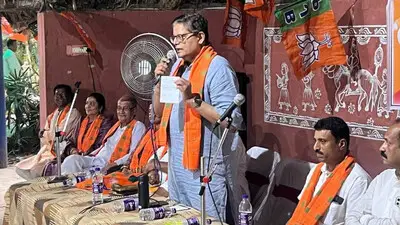Recommended Stories
By Ashutosh Mishra
Bhubaneswar: Odisha government’s plan to involve common people in the protection of elephants is a welcome move considering that there was an urgent need to make them stakeholders in this exercise.
The proposed Gajbandhu Yojana, the outcome of a brainstorming session attended by senior government officials and wildlife experts, envisages incentives for people who will be collecting and providing information to the forest authorities about the movement of jumbos that have been straying into human habitations frequently causing widespread damage to crops and property.
Steps like installation of CCTV cameras in the areas of elephant movement and setting up speed breakers on roads in elephant corridors may also be in the offing as part of the plan but its most important element seems to be the involvement of local people in collecting and passing on information about the movement of these animals in different areas.
This is crucial because advance warning about elephant raids can prevent or limit the scale of damage caused by them. It can save human lives as well as the lives of pachyderms who at times become the victims of the ire of people who suffer damage on their account. Besides it will truly make people stakeholders in the drive to protect these animals.
A comprehensive plan to contain man-elephant conflict in the state had become imperative considering the rising scale of damage which was also causing financial loss to the state government which was called upon to pay damage. Even more worrisome has been the trend of elephant killings—they are being poached and done to death by vengeful villagers who suffer damage to crop and property.
There have also been instances of jumbos being killed because of sheer negligence. Take for example the case of electrocution of seven elephants including a tusker and five females last year at Kamalanga village in Dhenkanal district after coming in contact with sagging overhead wires. The 11-KV line drawn for the construction of a railway bridge at Kamlanga, about 5 kms from National Highway 55, was hanging as low as just six feet from the ground. .
Odisha, which reported the presence of 1976 elephants during the last census in 2017, has been fast turning into the graveyard of this giant species. Sagging overhead wires have been one of the biggest killers of elephants. Statistics show that 168 elephants have been electrocuted in the state in the last 18 years, the toll being the highest in 2010-11 when 18 were killed. Quite a few of these were cases of deliberate electrocution with poachers or vengeful villagers wilfully pulled down live wires to kill the animals.
Then there have been cases of elephant being run over by trains—at least two such cases have been reported in the state in the last six to seven years. While the latest case was reported from Jharsuguda district the earlier one took place at Rambha in Ganjam district.
With jumbo casualties becoming a cause of worry for government officials as well as experts it is about time an effective plan was launched to end this gory trend. One hopes the proposed Gajabandhu Yojana achieves desired results.
(DISCLAIMER: This is an opinion piece. The views expressed are author’s own and have nothing to do with OTV’s charter or views. OTV does not assume any responsibility or liability for the same.)













